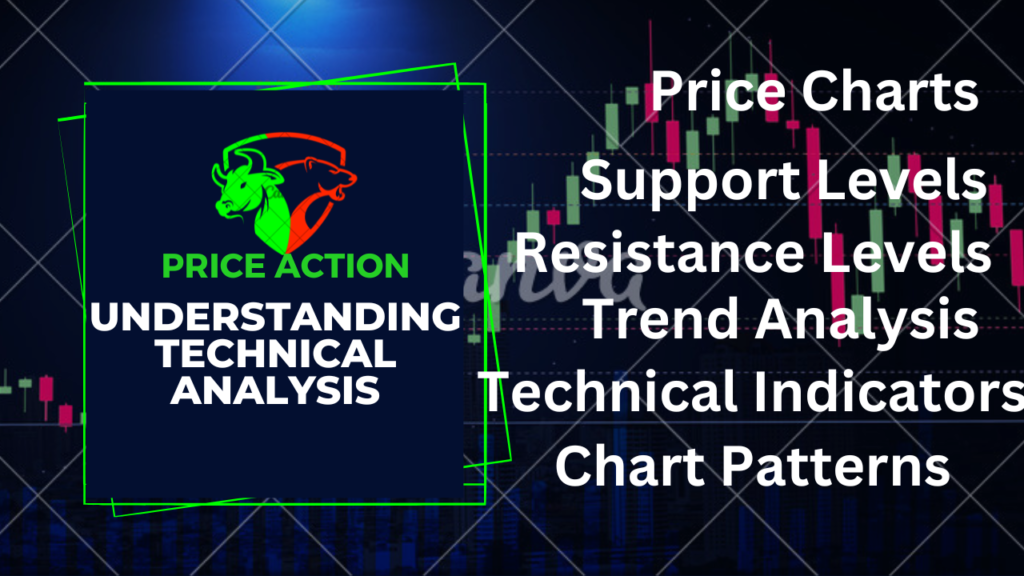Unlock the secrets of What is Technical Analysis? and learn how to predict stock price movements using historical data. In the world of stock trading and investment, there are two primary methods used to analyze securities: fundamental analysis and technical analysis. While fundamental analysis focuses on examining the financial health and performance of a company, technical analysis takes a different approach by analyzing historical price and volume data to predict future price movements. In this comprehensive guide, we’ll explore the intricacies of technical analysis, its methodologies, and how it’s used by traders and investors to make informed decisions in the stock market.
Table of Contents
ToggleUnderstanding Technical Analysis
At its core, technical analysis is the study of past market data, primarily price and volume, to forecast future price movements of a security. It operates on the premise that market trends, patterns, and behaviors repeat over time, allowing traders to identify potential opportunities for buying or selling stocks. Unlike fundamental analysis, which considers factors such as earnings, dividends, and industry trends, technical analysis relies solely on price charts and mathematical indicators to analyze market dynamics.

Key Concepts and Methodologies
- Price Charts: Price charts are the foundation of technical analysis. They display the historical price movements of a security over a specific time frame, such as days, weeks, or months. Common types of price charts include line charts, bar charts, and candlestick charts, each offering unique insights into market trends and patterns.
- Support and Resistance Levels: Support and resistance levels are key concepts in technical analysis. Support levels represent price levels where buying interest is strong enough to prevent further price declines, while resistance levels denote price levels where selling pressure tends to outweigh buying interest, causing price advances to stall.
- Trend Analysis: Identifying trends is a fundamental aspect of technical analysis. Trends can be classified as uptrends, downtrends, or sideways trends, depending on the direction of price movement. Trend analysis helps traders determine the overall direction of the market and align their trading strategies accordingly.
- Technical Indicators: Technical indicators are mathematical calculations derived from price and volume data, designed to help traders identify potential buy or sell signals. Examples of popular technical indicators include moving averages, relative strength index (RSI), MACD (Moving Average Convergence Divergence), and Bollinger Bands.
- Chart Patterns: Chart patterns are visual representations of price movements that recur in the market. Examples of chart patterns include triangles, flags, head and shoulders, and double tops or bottoms. Traders use these patterns to anticipate future price movements and make trading decisions accordingly.
Applying Technical Analysis in Trading
Traders and investors use technical analysis in various ways to inform their trading decisions:
You can also Read :Unlocking the Secrets: How to Invest in the Share Market
- Entry and Exit Points: Technical analysis helps traders identify optimal entry and exit points for their trades based on chart patterns, technical indicators, and support/resistance levels.
- Risk Management: Technical analysis enables traders to manage risk by setting stop-loss orders to limit potential losses and employing risk-reward ratios to assess the potential profitability of a trade.
- Trade Confirmation: Technical analysis can be used to confirm signals generated by other forms of analysis, such as fundamental analysis or sentiment analysis, providing additional conviction for trading decisions.
Advantages and Limitations
While technical analysis offers several advantages, including its simplicity, objectivity, and applicability across different markets and asset classes, it also has its limitations. These include the subjective interpretation of chart patterns, the potential for false signals, and the inability to account for unforeseen events or fundamental factors that may impact market movements.
Conclusion
In summary, technical analysis is a valuable tool used by traders and investors to analyze market trends, identify trading opportunities, and make informed decisions in the stock market. By studying price charts, identifying patterns, and utilizing technical indicators, traders can gain insights into market dynamics and improve their trading performance. While technical analysis is not without its limitations, its systematic approach and predictive power make it an indispensable part of the trader’s toolkit in navigating the complexities of the financial markets. Whether you’re a seasoned trader or a novice investor, understanding the principles of technical analysis can help you unlock the secrets of the market and achieve your financial goals.
Frequently Asked Questions (FAQs)
- What is technical analysis, and how does it differ from fundamental analysis?
- Technical analysis focuses on analyzing historical price and volume data to forecast future price movements, while fundamental analysis examines a company’s financial health and performance.
- How reliable is technical analysis in predicting stock price movements?
- While technical analysis can provide valuable insights into market trends and patterns, it’s not foolproof and should be used in conjunction with other forms of analysis and risk management strategies.
- What are some common technical indicators used in technical analysis?
- Popular technical indicators include moving averages, relative strength index (RSI), MACD (Moving Average Convergence Divergence), and Bollinger Bands, among others.
- How can beginners get started with technical analysis?
- Beginners can start by learning the basics of technical analysis, such as reading price charts, identifying trends and patterns, and experimenting with different technical indicators on demo trading platforms.
- What are some common mistakes to avoid when using technical analysis?
- Common mistakes include over-reliance on technical indicators, ignoring fundamental factors, chasing trends without proper risk management, and failing to adapt to changing market conditions.
- Can technical analysis be applied to different asset classes besides stocks?
- Yes, technical analysis can be applied to various asset classes, including forex, commodities, cryptocurrencies, and even bonds, as long as there is sufficient price and volume data available for analysis.
- Is technical analysis suitable for long-term investors, or is it more geared towards short-term traders?
- While technical analysis is commonly associated with short-term trading strategies, long-term investors can also benefit from using technical analysis to identify entry and exit points and manage risk in their investment portfolios.
- How important is it to stay up-to-date with market news and events when using technical analysis?
- Staying informed about market news and events can provide valuable context for interpreting technical analysis signals and understanding potential catalysts for price movements.
- Can technical analysis be automated using algorithms or trading bots?
- Yes, many traders use algorithmic trading strategies or automated trading bots that incorporate technical analysis signals to execute trades automatically based on predefined criteria.
- Where can I find reliable resources and tools for learning technical analysis?
- There are many online resources, books, courses, and trading platforms that offer educational materials and tools for learning and applying technical analysis techniques in the stock market.


4 thoughts on “What is Technical Analysis?”